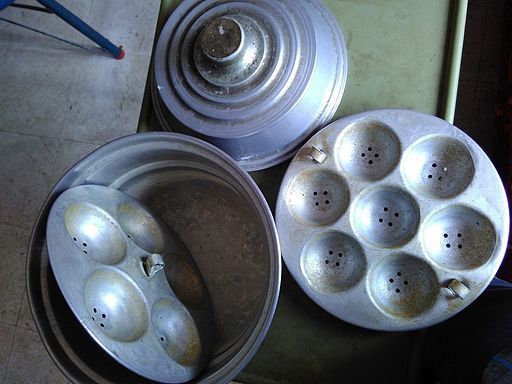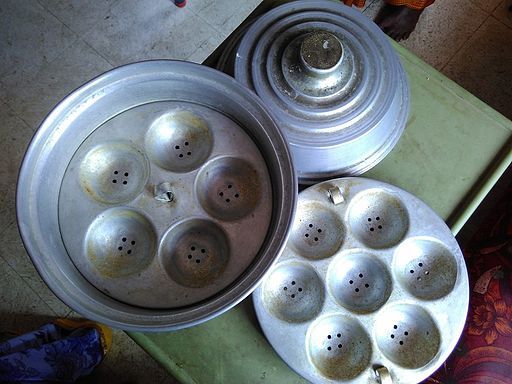Destination Infinity's Blog, page 41
September 3, 2016
Eka Dantaya Vakra Thundaya Deemahi (Cute Dance by KG Kids)
On the occasion of Vinayaka Chathurthi (Ganesh Chathurthi), have a look at a cute dance performance by KG kids for the song, ‘Eka dantaya vakra thundaya.. deemahi’ sung by Shankar Mahadevan. According to the Youtube video description, this dance was performed by Blooming Buds Montessory Palakkad kids.
Isn’t the dance well choreographed? I wonder how little kids are able to remember and perform all the steps for such a long time!
Happy Vinayaka Chathurthi/Ganesh Jayanthi to you all! 
August 28, 2016
Do We Care for Trees?
If you are in India, do one thing today – go to any street (with a few trees still left in them) and look closer at the trees and the area around them.
Recently, we went to a tree walk conducted by Nizhal at Nandanam, near the area where O.T. Ravindran, a plant artist and a tree conservator, lived. Click the above link to read about the great person who lived amidst us, whose paintings were brought out as postal stamps, but we are unaware!
During the tree walk, the organizers showed us how we are harming trees without even thinking twice.
Most of the trees on the road had advertisement planks/banners on their trunks fixed using deep nails. The number of such nails on a tree was appalling. It seems these nails affect the trees.
People had put bricks, stones, dust, etc. all around trees. This prevents water seepage and inhibits the well being of the tree.
People had cut huge branches of trees to accommodate buildings, etc. The issue is, these open portions of cut branches will lose moisture faster and is bad for the tree.
The open cage enclosure that was in place when the tree sapling was planted was never removed and in one tree we found it around a huge trunk, inhibiting the growth.
In front of one house, a solid cement pathway was built all around a tree. But they said this is better than cutting off the tree entirely as is practiced by many of our citizens!
Lights were wound around a tree in front of a shop to attract customers. These lights disturb the sleeping pattern of the birds on them which will eventually leave the tree. The heat generated by the lights is bad for the tree.
Tree-abuse is more common and more prevalent than we might think. We observed the above cases in just one street – imagine what we are doing to trees across the city and across the nation! It seems Nizhal’s volunteers go around the city on Sundays and holidays to remove the nails, banners, etc. put on trees.
I feel we should be more caring towards the trees around us – the first step would be to recognize the ways in which we are abusing them.
Destination Infinity
August 19, 2016
PV Sindhu wins Silver Medal for India at Rio Olympics – Yoohooo!!
Yoohooo!! At last, India wins a Silver Medal at The Rio Olympics 2016 in Women’s Badminton through PV Sindhu. Did you know that she’s the first Indian woman to win a Silver medal at the Olympics? We’ve had four bronze medals from Indian women before, but no Silver or Gold.
Until today.
There were a lot of expectations from Saina Nehwal, World No. 5 & the London Olympics Bronze medal winner, but PV Sindhu blitzed into the finals in spite of being World No. 10 & relatively inexperienced. This is her first Olympic appearance and what a fantastic way to end the tournament!
PV Sindhu is no underdog – she was already the first Indian woman to win a medal at the World Championships. Now the first Olympic Silver medal is another feather in her cap. I am sure many more laurels are to follow.
I saw today’s final match – the Spaniard (Carolina Marin) was more attacking and her smashes/drops were better. Somehow she correctly spots the corks that land just out of the court! But Sindhu was cool headed and played longer rallies better. Sindhu was more attacking in her other games and even won the first game in the final, but she was clearly playing a better player – the World No.1 at that! No worries, there is always the next time.
Although this year’s Olympic campaign for India has been a near-disaster, there have been a few brilliant moments – Abhinav Bindra, Sania-Bopanna & Dipa Karmakar came fourth – just one place short of bronze.
The hockey team, although they lost the quarter finals, defeated Argentina — the eventual gold medal winners — during their group match. No small achievement, that. More was expected out of boxers, wrestlers and archers, but tough luck.
Anyway, I am sure the first woman’s silver in the Olympics will inspire more Indians to take up sports professionally and not remain the mug-up-score-marks-get-IT/govt-job-settle-down types. It’s you and me who need to wake up and make a difference – not just the Saina Nehwals and PV Sindhus.
Destination Infinity
Photo/GIF Credit: By Johnlord27 (Own work) [CC BY-SA 3.0 (http://creativecommons.org/licenses/by-sa/3.0)], via Wikimedia Commons.
August 14, 2016
Veerapandiya Kattabomman
Veerapandiya Kattabomman was one of the first small-time Indian/Tamil Vassal King to rise and revolt against the British. He fought the British during the times of Hyder Ali/Tipu Sultan (end of 18th century), but there was one difference: The Sultans matched the British prowess (and almost won), but Veerapandiya Kattabomman was just a Vassal King controlling a few districts near Tirunelveli, under the Arcot of Nawab.
Kattabomman’s father actually paid taxes to the Arcot of Nawab, the then ruler of South East India. He also helped the Nawab collect taxes from neighboring Kingdoms. After his father’s death, Kattabomman continued the tax paying/collection for a couple of years.
The problem started when Arcot of Nawab handed over the tax collection duties — hence effectively the control of his Kingdom — to the British, as he was unable to repay loans taken from them. Veerapandiya Kattabomman was firm, and remained firm until his last breath, that he will not pay taxes to foreigners.
The British were furious at this and tried to arrest him via trickery through two collectors. In the first case, the collector summoned him (alone) to his palace and tried to arrest him forcefully, but Kattaboman literally fought his way outside and his escape was aided by his commanders and troops hiding in the vicinity.
When the second attempt to extort taxes also failed, the Madras Presidency sent a general with troops to attack Kattabomman’s Fort at Panchalang-Kuruchi, near Tirunelveli.
The attack failed and Kattabomman emerged victorious. The general escaped from the battlefield, but Kattabomman knew the Englishman would attack the fort again with the help of a much larger contingent from the neighboring Palayang-Kottai. He also knew he had no chance of defending his fort this time.
Left with no other option, and still refusing to pay taxes, Kattabomman left the fort and tried to secure the help of his so-called friends. It was three of those very friends who deserted him and enabled the British to arrest him without even a battle.
Kattabomman was hanged in a tree in the presence of all other Vassal Kings. After observing what a single Vassal King was capable of, the British were so afraid of another uprising that they revoked the right of all Vassal Kings to raise and maintain an army.
Kattabomman’s story is inspirational because although he knew he was going to lose the war, he upheld his principles and fought valiantly for what he believed was just. No wonder Kattabomman’s name is synonymous with bravery even now, unlike the Kings who deserted him whose names have become synonymous with treachery!
He was indeed a Freedom Fighter. One of the first. And the bravest.
Destination Infinity
Reference: ‘Nattukku Uzhaitha Nallavar: Veerapandiya Kattabomman’ published by Palaniappa Brothers in Tamil.
August 6, 2016
Have you seen an Idly Steamer? (Used before Cooker)
Guys, have you seen an Idly steamer that was used before cookers to make idlys? Looks like it is still being used at some places. I found one at a relative’s house recently. Guess what, this Idly steamer makes puffed idlys that are thicker, instead of the flat idlys we are get from a cooker. And the idly tastes nice – not sure if this is because of the homemade flour (vs. readymade flour we find commonly nowadays), or the steamer.
Notice that the idly plates have holes underneath. They put a cloth over the plates and then pour the flour. I was told that such plates with holes were used with cookers too earlier, but even the oldest ones I remember were without holes. Probably, the idly puffs and expands on the top because of the steam that provides additional heat by percolating through these holes (just a guess). Of course the steam comes from the water put underneath, just like a cooker.
This steamer can hold a maximum of two plates with five idlys unlike the cooker that can hold more plates. The reason for this post is: Why were the steamers replaced by cookers when the idlys are clearly better in the idly steamer? Have you guys seen a steamer before – this is the first time I am seeing one.
BTW, idly has never been my favorite dish. But sambar idly (idly soaked in sambar) has always been! And I also like idly upma, kaima idly, etc. Do you people like idly?
Destination Infinity
Photo Credit: Destination8infinity (Own work) [CC BY-SA 4.0 (http://creativecommons.org/licenses/by-sa/4.0)], via Wikimedia Commons.
July 30, 2016
Rio Olympics 2016: 15 Interesting Facts you should Know
The 2016 Summer Olympics is going to be held at Rio de Janeiro, Brazil from 5 to 21 Aug. 2016. Here are fifteen interesting things you should know about the Rio 2016 Olympics:
More than 10,500 athletes from 206 countries to participate, apart from a few independent candidates.
37 Sport Disciplines; 306 Events; 37 Venues.
Apart from Rio – the host city, events to be also held in: Sao Paulo, Belo Horizonte, Salvador, Manaus, Brasilia. All the cities are in Brazil and the last one is the capital city of Brazil.
Rio de Janeiro is the first South American city to host the Olympics.
Madrid, Tokyo and Chicago were the other cities contesting to host the 2016 Olympics but Rio won the final bid with a vote of 66:32 against Madrid in the last round.
Maracana Stadium in Rio is the largest venue for the games. It has a seating capacity of around 75,000. Opening and closing ceremonies to be held here.
Previous Olympic Edition: London 2012; Next Olympic Edition: Tokyo 2020.
The Rio 2016 games required more than 200 K.M. of security fencing; two large warehouses of more than 1,00,000 sq. K.M. combined storage capacity; 700 K.M. of plumbing connections; 70 K.M. of roads; 650 sq. K.M. of sidewalks; 15,000 trees and a new Tram line!
Baseball and Softball events were excluded from the previous edition; Rugby Sevens & Golf events have been included for this Olympic edition.
Rio firm Tatil designed the winning Logo in a competition involving 139 agencies. Here is the Olympic logo – have a look.
Vinicius and Tom are the Official Mascots of the 2016 Summer Olympics and 2016 Summer Paralympics.
For the first time, 85 hours of video content from the Olympics will be available in 360-degree Virtual Reality format exclusively for Samsung Gear VR devices.
For the first time, a blue hockey pitch to be used in the Olympics.
Real (R$) is the present day currency of Brazil. Total Investment for the 2016 Olympics games = R$ 29.6 Billion. (1 USD = 3.25 Brazilian Real.)
The 2016 Olympic Torch Relay was lit in Olympia – Greece, traveled to Athens & Geneva (among other cities) and then reached Brazil. In Brazil, the torch relay will visit more than 300 Brazilian cities and will finally reach Rio de Janeiro.
120 Athletes from India are participating in this Olympics – 37 more than the previous edition. Athletics, Field Hockey and Shooting events are sending the maximum athletes. Let’s wish them all the very best and hope they get more medals than the previous 2012 Olympics, which was 6!
Here is the official website: Rio 2016 Olympics.
Destination Infinity
Reference: Wikipedia article on 2016 Summer Olympics.
July 26, 2016
Is Studying for an Engineering Degree the Most Wasteful thing in Life?
School + Engineering Degree has almost become default near my place. I guess it’s the same across many places in India.
I am not talking about the job one may/may not get after studying B.E./B.Tech. I am talking about the 4 years of time spent while studying for the ‘Professional’ Degree. And of course, the HUGE Expenditure that is usually borne by fathers or banks.
Don’t you think 4 YEARS of YOUR TIME and LAKHS of YOUR MONEY is precious? Why waste it by enrolling in an engineering college?
A fraction of the students who enroll for engineering courses get good (read: moderately well paying) jobs and that might justify their investment (even then not the time). What about all those students who never got a job or never got a job in the field of their study?
Why are Indian parents encouraging this nonsense?
I wonder how many students… Forget that. I wonder how many professors understand what they teach!! If, in the name of engineering, you encourage students to blindly mug-up/memorize and pass with ‘flying colors’, all you achieve is increase their memory power. With cheap high capacity electronic storage devices available nowadays, even that is a waste.
Ever noticed the enormous number of gigantic engineering colleges that have sprung up across the country? Some are as big as towns! Do we really need so many engineers? Don’t you think it’s a colossal waste of infrastructure, money, and brains?
Maybe I am missing something. Maybe there is another side to this.
Perhaps the engineering colleges are employing people and providing jobs? Perhaps they are enabling construction, educational material, books, paper, xerox and other industries to prosper? Perhaps the engineering colleges impart the much required ‘discipline’ into students that can later be taken advantage of by the IT companies? Perhaps the engineering colleges help in ‘rotating money’ which might have otherwise been held back as black money or in Swiss accounts?
If these are the reasons for the existence of engineering colleges, by a similar logic, we can also justify the existence of liquor shops.
The same people who cry their hearts out after losing money to finance scams, emu scams, solar scams, etc. are proud of losing money to the engineering degree scam. I wonder by what logic anyone (except a small fraction) can justify their investment in engineering colleges?
Destination Infinity
PS: Written by an ‘Engineer’ who never did anything related to his ‘Engineering’ Degree.
PS2: I challenge all engineers (well, almost all of you reading this post) to declare that the four years spent in an engineering college were very productive and useful for your future career. Let’s see how many can do that.
July 20, 2016
KABALI: 15 Interesting Facts about THE MOVIE
Rajnikanth‘s next movie, Kabali, is releasing world-wide on Friday, July 22, 2016. Rajnikanth is a Hero & Super Star in Tamil – a regional language in India, but speakers are spread across the world.
The pre-launch buzz is just too much to handle, at least here in Chennai. In the meanwhile, I thought why not list a few interesting facts about Kabali that you ought to know.
Kabali is primarily a Tamil movie with major viewership in Tamil Nadu. The movie has also been dubbed in Hindi, Telugu, Malayalam. Wait: there are Malay, Thai and Chinese versions of this movie too!
Budget: 70 Crores INR. Pre-release Revenue: 200 Crores INR.
Kabali is expected to release in 750 theaters across Tamil Nadu, more than 500 theaters in the USA, and more than 12,000 screens across the world. This is more than double that of the recent super-hit Hindi movie Sultan starring Salman Khan, who is a major Bollywood star popular across India.
Air Asia, Cadburys 5-Star, Airtel, Amazon, Muthoot Fincorp, are just a few brands that have associated with the movie for marketing.
This movie is rumored to be about a person named Kabaleeswaran who goes to Malaysia from Tamil Nadu to work in a rubber farm and fights the bosses who oppress the laborers there.
A few companies in Chennai and Bengaluru have declared a holiday on July 22 because they were not able to handle the enormous leave requests from employees on that day. The first three days are already fully booked in most theaters.
Kabali is the only Tamil movie to be released on July 22, and there are no major releases for at least two weeks afterwards in TN.
The producer of this movie, S Thanu, has produced Rajnikanth’s 1978 Tamil movie called Bairavi, but the two have not worked together since, except for this movie.
With more than 5 million views within 24 hours of its release, Kabali movie trailer/teaser is now the most viewed trailer in Asia.
Kabali will also premiere at Le Grand Rex in Paris, France.
Satellite rights for this movie was bought by Jaya TV.
The director of this movie, Pa. Ranjith, has directed two hit and critically acclaimed movies – Attakathi (2012) and Madras (2014).
Kaali and Kannabiran were also considered as prospective titles for Kabali initially.
The shooting mostly happened in Malaysia, Hong Kong and Bangkok.
The story is rumored to be loosely based on a Don from Mylapore, Chennai.
Destination Infinity
References:
Kabali Wikipedia page.
Rajnikanth’s next film loosely based on real-life don (Business Insider).
As Kabali fever grips Tamil Nadu, everyone is making a killing (Indian Express).
Kabali: Bengaluru and Chennai firms declare holiday for Rajnikanth Moive (International Business Times).
Rajnikanth’s Kabali to dethrone Salman Khan’s Sultan (Indian Express).
SuperStarOda5Star – Kabali Movie Special (sarathbabu.in).
So the question is not WHETHER you are going to watch Kabali, but WHEN? 
Watch India’s Finest Films on ‘Zee Classic’ every Sat. at 10 P.M.
Three hours of entertainment. Some songs, dance, action and comedy. Sounds familiar?
Bollywood movies have always been the most popular mode of entertainment in India. We are all familiar with the on-screen running around the trees, high-octane action sequences, twins separated at birth reuniting decades later with a sprinkle of romance and lots of mirch masala. We leave the theatres after watching these movies wanting our lives to be a perfect film story with a happy ending.
But sometimes, we want to experience something historical, contemporary, something more deep rooted and intense. This is when we wish to watch movies which leave a greater impact on the society as they entertain leaving an impactful message that concerns all of us living together in a society. Some of these movies actually change our mindsets while some fill us up with emotional turmoil and some others, give our life a new direction. Indian Cinema, over the years, has beautifully transformed and re-invented itself. From socially relevant topics of child marriage, dowry, female feticide, re-marriage to a simple love story, film-makers have done it all.
With its proposition of ‘Woh Zamaana Kare Deewana’, Zee Classic is India’s only Hindi movie channel that endeavors to recreate the magic of iconic classic and new age cinema by showcasing not just the films that shaped Indian cinema, but also acquaint viewers with the creative talent who were a part of that timeless era. Zee Classic boasts of an outstanding library of Indian cinematic classics and it has recently associated with National Film Development Corporation of India (NFDC). Starting 16th July, every Saturday at 10 PM, Zee Classic will premiere ‘India’s Finest Films’, a distinguished property showcasing masterpieces like ‘Mirch Masala’, ‘Ek Doctor ki Maut’, ’27 Down’ and ‘Salaam Bombay’ amongst many other such gems from the NFDC library. These movies mark the debut of icons like Irrfan Khan, Pankaj Kapur, Naseeruddin Shah and many more. This festival kickstarts with ‘Salaam Bombay!’ directed by Mira Nair on Saturday, 16th July at 10 PM.
Here is a list of 14 Best Indian/Hindi Bollywood Classic Movies you Cannot afford to miss:
1. Salaam Bombay!
In 1988, Mira Nair made her directorial film debut with Salaam Bombay! which chronicled the lives of a group of street children in Mumbai. Inspired by the actual street children of Mumbai who starred in the movie, the film won awards across the globe for its authenticity and unwavering portrayal of the life of Mumbai’s abandoned and homeless youth.
The list of achievements is a long one for this movie. It won the National Film Award for Best Feature Film in Hindi, the National Board of Review Award for Top Foreign Film, the Golden Camera and Audience Awards at the Cannes Film Festival, and three awards at the Montréal World Film Festival. ‘Salaam Bombay!’ was India’s second film submission to be nominated for the Academy Award for Best Foreign Language Film. The film was among the list of “The Best 1,000 Movies Ever Made” by the New York Times.
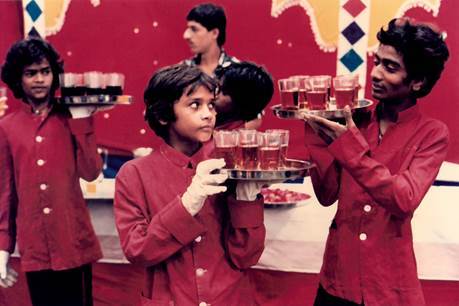 Catch ‘Salaam Bombay!’ on 16th July at 10 PM on Zee Classic
Catch ‘Salaam Bombay!’ on 16th July at 10 PM on Zee Classic2. Mirch Masala
For some Ketan Mehta will always remain the man who made Mirch Masala. An attention grabbing film, it rotates around the gender divide in the society. It is the story of Sonabai (Smita Patil) and her struggle to protect her sanctity from the evil Subedar (Naseeruddin Shah) and a village full of sexist men. The dusty and dried surroundings of Kutch shown in the movie probably are an illustration for the values of a male and class-dominated Indian culture.
Amongst other things Mirch Masala has gone down in history as one of Smita Patil’s finest performances with Forbes including her performance in the film on its list, ‘25 Greatest Acting Performances of Indian Cinema’.
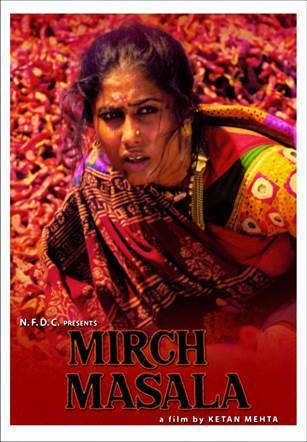 Catch ‘Mirch Masala’ on 23rd July at 10 PM on Zee Classic
Catch ‘Mirch Masala’ on 23rd July at 10 PM on Zee Classic3. Salim Langde Pe Mat Ro
Salim Langde Pe Mat Ro is a rare film and an attempt to showcase the dilemmas faced by urban Muslims thoughtfully but boldly. In addition to the portrayal of Bombay’s mohalla life, it also shows the joys of friendship and camaraderie and pleasure of loafing around. Salim Langda (Pawan Malhotra) is a confident petty thief. Salim earns his livelihood by doing odd jobs for the big bosses of Bombay’s underworld. His final ambition is to ape these underworld kings whose status he envies.
Saeed Mirza, the director, has a long history of making films which have ridiculed stereotypes to which minorities are subject to in popular Hindi films and this movie is one of his finest creations. The film won the 37th National Film Award for Best Feature Film in Hindi and the National Film Award for Best Cinematography in 1989.
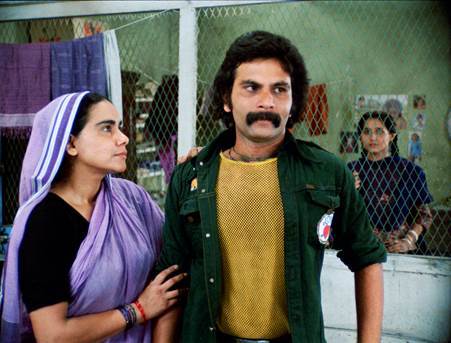 Catch ‘Salim Langde Pe Mat Ro’ on 30th July at 10 PM on Zee Classic
Catch ‘Salim Langde Pe Mat Ro’ on 30th July at 10 PM on Zee Classic4. Ek Doctor Ki Maut
Ek Doctor Ki Maut is an award winning film by the noted Bengali director Tapan Sinha, which depicts the ostracism, bureaucratic negligence and insult of a doctor and his research, instead of recognition and credit. This movie is loosely based on the life of Dr. Subhash Mukhopadhyay, an Indian physician who pioneered the IVF treatment just around the same time when another leading scientist, Dr. Robert Edwards was conducting separate experiments in England.
The film won the 38th National Film Award for Second Best Feature Film, National Film Award for Best Direction and National Film Award – Special Jury Award awarded to the male lead, Pankaj Kapoor.
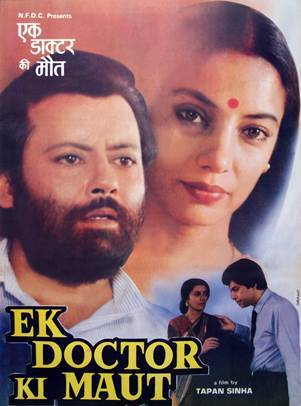 Catch ‘Ek Doctor Ki Maut on 6th August at 10 PM on Zee Classic
Catch ‘Ek Doctor Ki Maut on 6th August at 10 PM on Zee Classic5. Gandhi
The name says it all!
Gandhi (1982) was produced and directed by Richard Attenborough and written by John Briley. Starring Ben Kingsley, Candice Bergen, Edward Fox, John Gielgud, Trevor Howard, John Mills, Roshan Seth and Martin Sheen, it is one of the most iconic films of all times.
Gandhi is the highest Oscar winning film of all time – claiming eight awards from 11 nominations, including Best Film – although it almost never got made! The late director Richard Attenborough revealed in of his interviews “It took me 20 years to get the money to get that movie made. I remember my pitch to 20th Century Fox. The guy said: ‘Dickie, it’s sweet of you to come here. You’re obviously obsessed. But who will be interested in a little brown man wrapped in a sheet carrying a beanpole?’ I would have loved to have met that guy after the Oscars!”
Attenborough knew that he would be telling one of the 20th-century’s most remarkable stories, that of the Indian lawyer who returned from racially segregated South Africa to drive the British out of his home country through successive acts of non-violent protest.
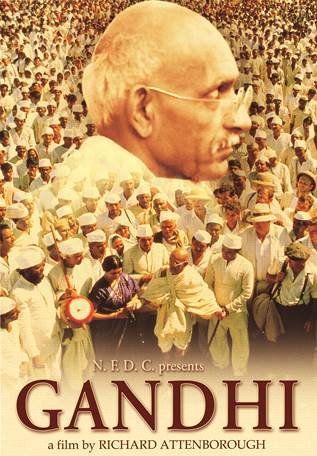 Catch ‘Gandhi’ on 13th August at 10 PM on Zee Classic
Catch ‘Gandhi’ on 13th August at 10 PM on Zee Classic6. Ardh Satya
Ardh Satya is directed by the very talented Govind Nihalani. The film is based on a short story by D.A. Panvalkar and the script is written by Vijay Tendulkar. It has Om Puri, Smita Patil, Amrish Puri, Naseeruddin Shah and Sadashiv Amarpurkar in lead roles. It is the story of Anant Welankar, son of a retired constable in Maharashtra Police, who is forced to let go of his dream of pursuing an MBA and join the Police force.
After Aakrosh, Ardh Satya is the second film made by Govind Nihalani. It is brutally honest in the depiction of the trials, tribulations, character and conflicts of its protagonist. In times when everything and everyone has a price, it is a hard hitting journey of an honest man… a part of which remains back to haunt you long after the credits have rolled.
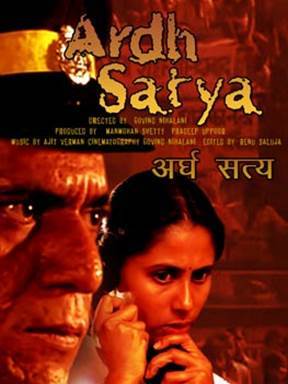 Catch ‘Ardh Satya’ on 20th August at 10 PM on Zee Classic
Catch ‘Ardh Satya’ on 20th August at 10 PM on Zee Classic7. Pestonjee
Pestonjee is a film directed by Vijaya Mehta, starring Anupam Kher, Naseeruddin Shah and Shabana Azmi in lead roles. The film is an intimate look into the life and mannerisms of the Parsi community especially those living in the city of Bombay (now Mumbai) in the 1950s and 60s.
‘Life is for living, not for complaining.’ says the cover to ‘Pestonjee’. Phirohshah aka Phiroj (Naseeruddin Shah) and Pestonjee aka Pesi (Anupam Kher) are the best of friends. They are almost like twins. There is no life without one another and they also hope to get married at the same time. But destiny has something else stored for them.
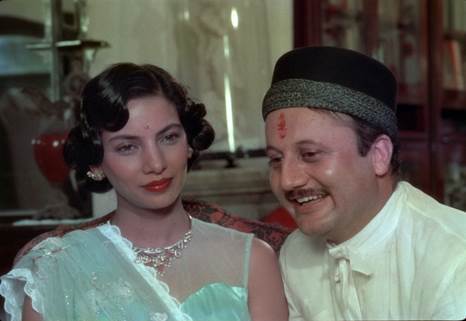 Catch ‘Pestonjee’ on 3rd September at 10 PM on Zee Classic
Catch ‘Pestonjee’ on 3rd September at 10 PM on Zee Classic8. Qissa
All of us have grown up with different kinds of stories that were narrated to us. Some of them will be overlooked while some will be lost with the passage of time. But, the story of Qissa is timeless. Irrfan Khan as Umber Singh, Tisca Chopra as Mehar, Tilotama Shome as Kanwar Singh, Rasika Dugal as Neeli are the main protagonists of the movie.
Anup Singh’s Qissa is a powerful, haunting, superbly crafted film about the complexities of character and sexuality. Does personality stem from a society or nation you were conceived in, your sex, sexuality or just the environment you were brought up in and situations that formed you? The film packs these profound inquiries into a simple story.
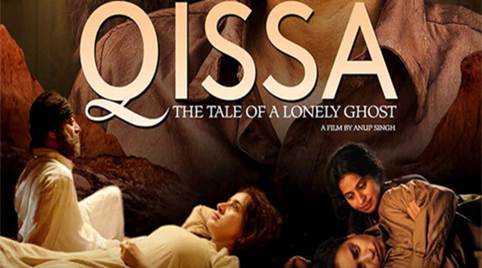 Catch ‘Qissa’ on 10th September at 10 PM on Zee Classic
Catch ‘Qissa’ on 10th September at 10 PM on Zee Classic9. 27 Down
27 Down is a film directed by Awtar Krishna Kaul, featuring Raakhee and M.K. Raina in lead parts. The film is description on 27 Down, the Bombay-Varanasi Express. Sanjay (M K Raina), the son of a railroad employee, gives up on his dreams of becoming an artist when his father demands he come back to the family occupation. He gauges life in train sounds and journeys. The requests of congruity influence his connection with a young lady Shalini (Rakhee).
27 Down is one of those rare gems of the Indian silver screen that merited more credit than what it really recieved. Despite it being made 40 years ago, it manages to remarkably portray the relationship between two young adults as they get together and try to discover themselves in each other through their conversations, meaningful connections and silent solitude!
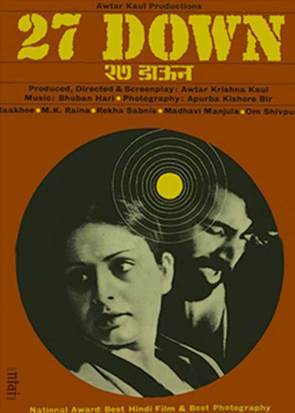 Catch ’27 Down’ on 14th September at 10 PM on Zee Classic
Catch ’27 Down’ on 14th September at 10 PM on Zee Classic10. Gangoobai
“Apne pasand ki cheez milna badi baat hai.
Agar sab kuch mil gaya, lekin apne pasand ki cheez hi na mili toh matlab kya hai jeekay!”
(“It is a big thing, to get what one desires.
If you have everything, but cannot get that one thing you desire, then what is the point of living!”)
Directed by Priya Krishnaswamy, Sarita Joshi is the main protagonist in Gangoobai. The story revolves around an elderly maid who strives to accomplish her dream of buying a costly Gara sari and changes the lives of individuals she comes in contact with while in Mumbai to purchase the sari.
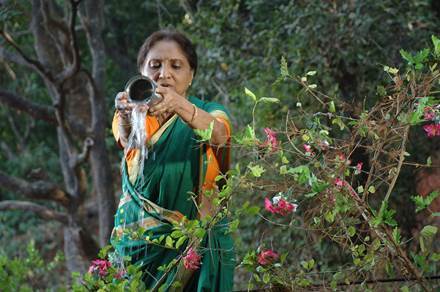 Catch ‘Gangoobai’ on 1st October at 10 PM on Zee Classic
Catch ‘Gangoobai’ on 1st October at 10 PM on Zee Classic11. Mammo
Mammo (1994), a film by Shyam Benegal, is the first film in the series of Muslim trilogy including Sardari Begum (1996) and Zubeidaa (2001).
The film portrays the flinching truths frequently confronted by the powerless, post-partition. It reminds of the emotional torture of being torn far from one’s roots over and over; in spite of one turning a blind eye or making a noise for change in the circumstances which they have no control over. It makes one appreciate something which is frequently is taken for granted until it is lost or gone for good. The character of Mammo (Farida Jalal), abandons her family and home behind for love and moves to Pakistan. They live in peaceful co-existence until her husband leaves Mammo defenseless and desolate.
Even though the motion picture is named after Mammo, the film tells two stories, one of Mammo, obviously, and other of youthful Riyaaz…His life and companions, his trysts with cigarettes, adult films, his shame that he is not as affluent as his companions, him trying to find himself, his bothering on seeing a stranger trying to be a part of his family and his ambition of turning into an author in the future.
This movie is also the recipient of National Film Award for Best Feature Film in Hindi and Filmfare Critics Award for Best Performance by Farida Jalal and National Film Award for Best Supporting Actress by Surekha Sikri.
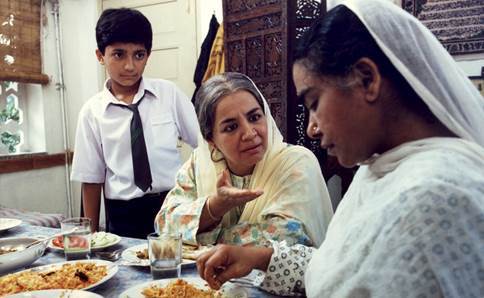 Catch ‘Mammo on 27th August at 10 PM on Zee Classic
Catch ‘Mammo on 27th August at 10 PM on Zee Classic12. Massey Sahib
Massey Sahib is a 1985 film directed by Pradip Krishen, featuring Raghuvir Yadav in the main role. It was Pradip Krishen’s first film, and was based on a novel Mister Johnson written by Joyce Cary in 1939. The film also has stars like Arundhati Roy, who was yet to pen down her first novel and win the Man Booker Prize, alongside Barry John and Veerendra Saxena.
This story revolves around a man who is stuck in the crossfire where British Frontier principles smothered Indian freedom and colonializes it. This is a story told from an Indian perspective. Francis Massey (Raghuvir Yadav) works as a secretary for a British government officer in central India. Francis tries to out-do his employer in an attempt to be more British than him. He dresses British and even has a church wedding. He is not the most productive or gifted specialist, and his supervisor, the Commissioner Charles Adam (Barry John), regularly mediates on his benefit. But, Massey’s unexpected fate is entirely past the Commissioner’s mediation.
Even though Raghuvir Yadav has never won a National Award…he did win two International Awards for the Best Actor for Massey Sahib, FIPRESCI Critic’s Award, Venice Film Festival, 1986 and the Best Actor Silver Peacock, IIFI, 1987.
 Catch ‘Massey Sahib’ on 17th September at 10 PM on Zee Classic
Catch ‘Massey Sahib’ on 17th September at 10 PM on Zee Classic13. Arvind Desai Ki Ajeeb Dastaan
Arvind Desai Ki Ajeeb Dastan (ADKAD), a film dear to Saeed Akhtar Mirza’s heart, was a masterpiece of the parallel silver screen development that was a tribute to Indian producers. The motion picture revolves around the internal clashes of a person born and brought in a city, who battles to comprehend the significance of his life and those encompassing him, including family and companions. It stars Shreeram Lagoo, Rohini Hattangadi, Satish Shah, Suresh Oberoi (in a cameo), Om Puri and Dilip Dhawan.
Arvind Desai (Dilip Dhawan) is a single child of a rich specialist (Shriram Lagoo) who deals in extravagant luxury handcrafted products. His has conflicting emotions for his dad. While he detests his commanding nature, he respects his aura, power and sharp mind. He has long examinations on workmanship and governmental issues with a Marxist companion (Om Puri). Much against his desires, his marriage is orchestrated to a young lady from a high-class family who has quite recently returned from Paris.
It’s a film about the trans-generational exchange of qualities and the repercussions of the prevalent legacy influencing the value system in the future.
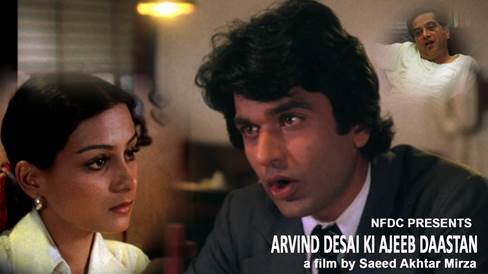
Catch ‘Arvind Desai Ki Ajeeb Dastaan’ on 8th October at 10 PM on Zee Classic
14. The Good Road
The Good Road is a 2013 Indian drama film written and directed by Gyan Correa. The film won the trophy for Best Gujarati film at the 60th National Film Awards. Also, it was the first Gujarati film ever chosen to represent India at the Oscars. The motion picture is described in a hyperlink arrangement, where a few stories are interwoven, with the focal point of the story being an expressway in the country terrains of Gujarat close to a town in Kutch.
A family on a holiday lose their child… A truck driver’s last rid… A young lady in search of hope… This is an adventurous journey, across a national highway, and into the heart of a concealed India, where demonstrations of extraordinary sympathy are shown to outsiders.
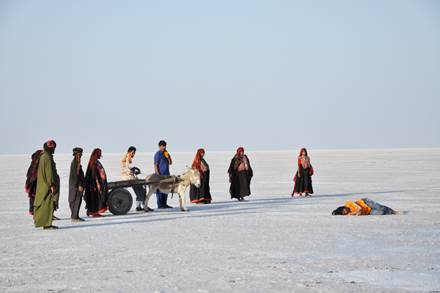 Catch ‘The Good Road’ on 15th October at 10 PM on Zee Classic
Catch ‘The Good Road’ on 15th October at 10 PM on Zee ClassicTo acquaint the youth of India with parallel cinema and enhance their movie-viewing experience, Zee Classic has also curated an hour long special feature called ‘India’s Finest Films – A Parallel Journey’. It includes views of stalwarts of Indian cinema like Shyam Benegal, Mahesh Bhatt, Saeed Mirza, Kundan Shah, Rohini Hattangadi amongst others. It is available on the Zee Classic YouTube channel.
Audiences can also catch it on television as a prelude to ‘India’s Finest Films’. Excerpts of this feature along with additional exclusive interviews will be showcased during the telecast of movies on Zee Classic.
Destination Infinity
July 16, 2016
What Spirituality means to me
I think the concept of God is a human creation. There may or may not be an all-knowing all-powerful being, but the Gods we have created, I feel, were created for our own convenience. Nothing wrong with it, just my thought.
Personally, I like to associate God with Nature. People who believe in advaita feel that since we are a part of nature, we are also a manifestation of God. And the purpose of our life is to realize that.
Could be.
I feel I don’t qualify to write about spirituality, but I want to record my thoughts on this topic now.
The word spiritual, to me, is analogous to inner peace.
When we seek answers to the most important questions of life, we invariably seek the counsel of our spiritual-side, not the analytical-side. We need those answers because we believe that it will lead us towards peace and contentment.
Some people get their answers under a Bodhi Tree, some people get their answers in a Temple, Church or Mosque, some people get their answers inside their house. And a distraught many don’t get their answers at all!
To me, being spiritual is Sustainable-Living. It takes a lot of maturity to realize less is more.
**
For some reason, I am reminded of a conversation I had with a client a few years back –
Me: Since your daughter is moving to the U.S., I guess you too plan to move there shortly afterwards *grins*
He: (After a small pause) Search for happiness in your mind, not in a place.
Destination Infinity
PS: This post has been written for a contest organized by Chennai Bloggers Club and The Monk Key (Spiritual Fiction).
So, what does spirituality mean to you?


